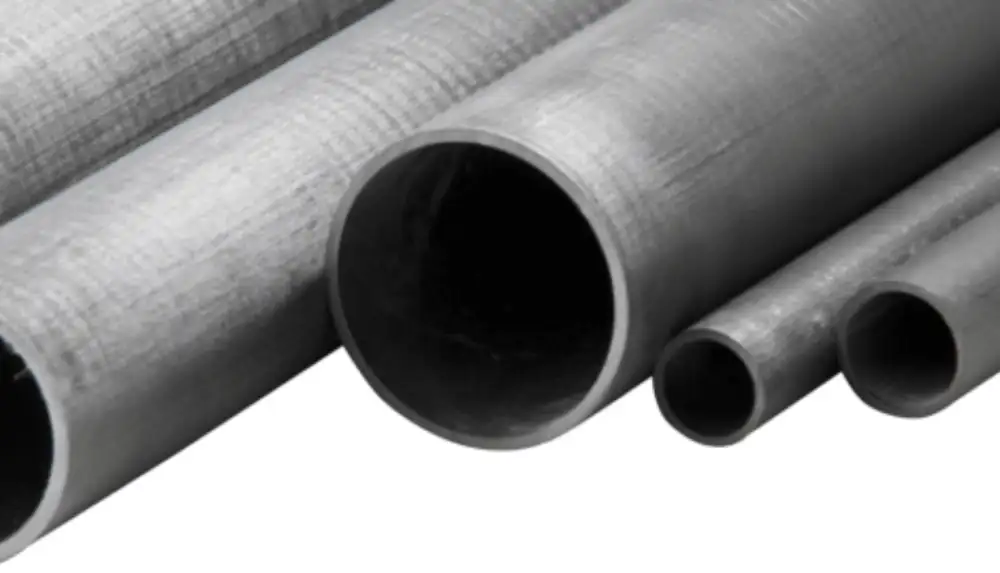What Is Unidirectional Carbon Fiber Tubing
We are extremely proud at Rock West Composites to carry a complete selection of carbon fiber tubing. Our inventory of tubing products continues to grow as well. Among them is unidirectional carbon fiber tubing, the most popular form of tubing we sell. We consider unidirectional tubing the workhorse of our tubing inventory.
Unidirectional tubing is so named due to the alignment of the carbon fibers. This post will explain this, and more. Suffice it to say that unidirectional tubing is suitable for a wide range of applications – whether straight up or finished with an outer layer of woven fabric. Please do not hesitate to contact us if you are interested in knowing how unidirectional carbon tubing could be implemented in your designs.
Unidirectional vs. Multidirectional
As previously mentioned, ‘unidirectional’ relates to how carbon fibers are aligned. In the case of unidirectional tubing, you can see that all of the fibers on the outside of the tube run in the same direction as do most of the other layers in the tube. They are parallel for all intents and purposes. Contrast this to a multidirectional material.
A multidirectional tube presents the telltale woven appearance. There is good reason for that. When you run fibers in multiple directions, you weave them together to create a fabric. That is the whole point of weaving. The woven appearance is what most people think of when they consider carbon fiber parts.
So why go unidirectional instead of multidirectional? It really depends on how much strength you need and where you need it. Carbon fiber itself is a reinforcing material; it is combined with epoxy resin to create a carbon fiber reinforced polymer (CFRP). Most of the tensile strength a carbon fiber part offers is in relation to fiber alignment.
Strength in the Same Direction
Carbon fiber’s tensile strength tends to run in the same direction as the fibers. Thus, a unidirectional tube is very strong along its length. Its tensile strength is essentially back and forth along the entire length of the tube. By contrast, a multidirectional tube exhibits tensile strength in multiple directions.
An ideal application for unidirectional tubing is bicycle tubing. Bike designers want superior longitudinal rigidity for bike frame components. Depending on the part, they may not need multidirectional strength. However, some bike makers prefer their unidirectional tubing be wrapped in an outer layer of woven fabric. They want the look of the weave for aesthetic purposes and the fabric helps contain fibers if the part does in fact fail.
Adding that outer layer gives them the aesthetic they want. As an added bonus, the layer provides some extra rigidity across the entire surface of the frame.
Unidirectional tubing is ideal for applications involving movement and stress only in back and forth directions. On a grand scale, rocket bodies are good candidates for unidirectional tubing. On a smaller scale, unidirectional tubing is also ideal for model rockets, lacrosse sticks, and so forth.
Increasing Tube Strength
One last thing to know about unidirectional tubing is that strength can be increased in key areas by adding extra layers. Consider an application where two or three tubes meet at a common joint. If that joint is subject to stress from multiple directions, the tubing can be reinforced by a layer or two of woven fabric.
This is one of the benefits of choosing carbon fiber over metal materials. Just by adding additional layers of woven fabric in key locations, fabricators can increase strength while adding very little weight. It is not so easily done with aluminum, steel, or titanium.
Carbon fiber tubing is one of our best-selling products. If you would like to know more about it, please reach out to us at your convenience. Our tubing inventory includes high quality products for DIY and commercial needs.
He initially began this project with Rock West’s release of a new product, carbon fiber chip board, a few years ago. This chip board is known as “forged carbon” or “Damascus carbon,” which is short strands of carbon fiber pressed into a plate.He explains his creation process as, “I just dissembled the old knife and traced the general shape from the original handle pieces, then used sandpaper and hand grinders to finalize the profile. After the shape was finished, I used fine sandpaper to remove the scratches and then used a polishing compound to give it a nice smooth finish. Locating the screw holes was the most challenging part as all three holes need to meet a very tight tolerance.” Amazingly, even after two years have passed, he says the knife remains in great condition.Rock West is always encouraging engineers and DIYers alike to try utilizing composites outside of major projects. There are many simple items that could benefit from a material that is lightweight and strong, like pens, bows, or in this case, a knife.

